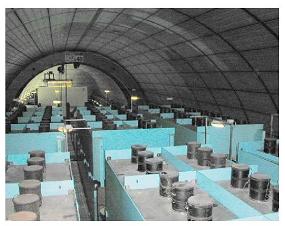In 1987, the first observation of neutrinos from the gravitational
collapse of a bleu giant in the Magellanic Clouds made the neutrino
astrophysics an experimental science.
Since then a number of different, more sensitive neutrino telescopes have
been constructed and are observing the Galaxy, even in this moment, to
search for the most catastrophic phenomena that occur in the universe.
At the same time these phenomena as: supernovae, masses captured by black
holes and merging binary stars, are the candidate sources of
Gravitational
Waves (GW).
The detection of gravitational waves is one of the great challenges of
modern physics. Since the pioneering work made by John Weber during the
sixties, many experiments were devoted to detect these faint ripples of
the space time metrics, that are produced by accelerated mass.
The weak interactions of both these radiations with matter are of a
great
obstacle to their detection and during the years more and more sensitive
detectors were designed to reach the final aim. Research groups belonging
to the Institute of Physics of Interplanetary Space (IFSI) have been
involved for many years in most advanced experiments, maintaining a
leader
position in both fields.
At present IFSI is involved in two experiments for GW detection,
EXPLORER
located at the CERN laboratories in Geneva and NAUTILUS at the INFN
laboratories in Frascati, and one neutrino telescope, LVD (Large Volume
Detector) at the Gran Sasso National Laboratory (3000 m H2O eq. depth).
The GW detectors are of the resonant kind: GW are searched observing the
excitation of the fundamental vibration mode (displacements as small as
10^19 m) of massive aluminum bars. The neutrino telescope is based on the
detection of scintillation light in liquid target, where the sensitive
mass, one of the fundamental parameter for cosmic neutrino detection, is
now of the order of 1000 tons.
The two antennas have been taking data continuously for several years and
EXPLORER was the first antenna to start continuous operations in 1991.
Since then many runs of measurements were done, most in coincidence with
other worldwide located detectors. The coincidence analysis among the
candidates signals of different experiments is a powerful tool to
strongly
reduce local disturbances, that can produce false alarms. The LVD
telescope, on the other hand, has been continuously taking data since
1992
and participates together with the most sensitive telescopes to the
worldwide SN neutrino detector network. The comparison of signals
observed
by detectors located in different position with respect to the neutrino
source, makes possible to study neutrino characteristics with a
sensitivity that is unreachable in other ways.
During 2002 an analysis has been published on EXPLORER and NAUTILUS data
showing an excess of coincident events when the two antennas were
favorably oriented with respect to our galaxy (Class. Quantum Grav. 19,
5449 - 5463, 2002). During the reported period of operation, both
Explorer
and Nautilus collected data with their best sensitivity ever. Therefore,
the observed statistical excess, even if not strong enough to draw any
firm conclusion, is extremely interesting and worth investigating with
new
data that we expect to collect in 2003.
The existence and even the absence of a neutrino counterpart in these
events, will help to model the source characteristics and, eventually, to
identify them.
Immagini:


